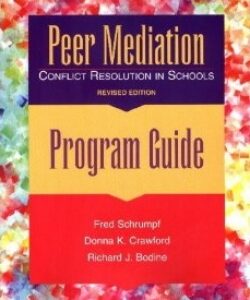Classrooms across the country are discovering the power of service-learning–the ideal way to help students develop social and academic skills while giving back to their community. Now for the first time, there’s a practical how-to guide on using serving-learning to promote inclusion and differentiate instruction for students with and without disabilities. Much more than “community service,” service-learning activities help improve outcomes for all students because they’re carefully linked to the curriculum and Individualized Education Program (IEP) goals.
This book shows K-12 educators and administrators exactly how the service-learning approach:
- helps students with and without disabilities meet academic standards;
- facilitates generalization as students transfer what they learn from the classroom to the real world;
- works with both student-directed and teacher-mediated instructional approaches;
- fosters strong classroom communities where all students help and learn from each other;
- builds students’ functional life skills and encourages the development of special talents;
- enhances job skills and work experience so students are better prepared for their future careers; and
- helps students develop a positive self-image as they provide valuable services to their community.
This book contains: (1) Introduction to Service-Learning; (2) History: Service-Learning, Standards Based Education, and Inclusion; (3) Rationale: Why Use Service-Learning in Inclusive Classrooms?; (4) Preparation: Connecting Service to the Curriculum; (5) Investigation: Identifying Community Needs; (6) Action: Planning and Implementing the Service Activity; (7) Reflection: Thinking Critically and Building Understanding; (8) Evaluation: Documenting Effects on Students and Community; (9) Celebration: Recognizing Everyone’s Contribution; and (10) Continuation: Sustaining Standards-Based Service-Learning, Differentiated Instruction, and School Change. A list of references and an index are also included.




Reviews
There are no reviews yet.